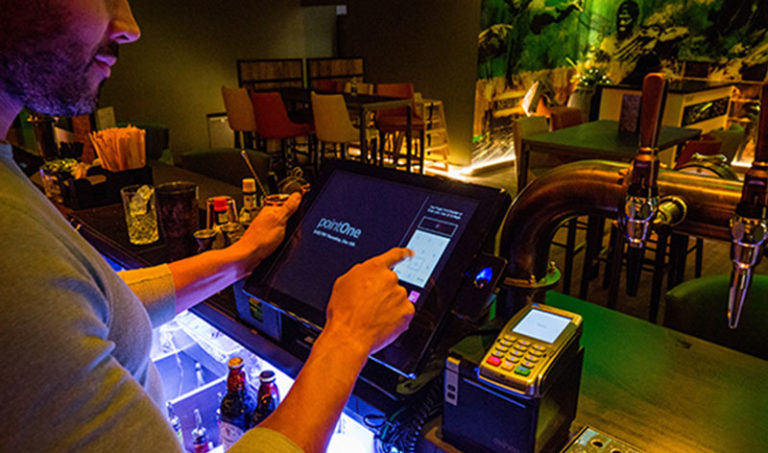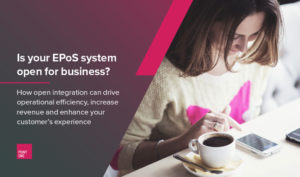Introduction
Having a fully customisable EPoS solution that can work as a central hub to integrate seamlessly with essential apps or third-party software of your choice is key to maintaining flexibility, competitive edge and staying in control of your restaurant management IT infrastructure.
With technology moving at an incredible pace and the continued development of existing software platforms, there are more applications than ever to help you drive efficiency, revenue and customer retention.
So what are the key considerations when choosing which software integrations to adopt for your business?
1. Is your EPoS system cloud-based or a hybrid system?
Purely cloud-based EPoS systems are fully dependent on a stable internet connection to work and store their data. Although some do have an offline mode, often crucial equipment like till and kitchen printers will not work in this mode.
A hybrid EPoS system is both hard-wired to a server and cloud-based giving you a fully functional system in offline mode should the internet connection go down. This is crucial when working with third-party software integrations as it ensures that all data is always accessible.
2. Is there an API (Application Programming Interface) that your EPoS provider can integrate with?
This is essential so all the software can talk to each other and share data.
3. Are they white label?
Branding is key in retaining customer loyalty so their experience across in-house dining, online reservations/ordering, paying etc should all share the same visual look and feel of the brand even if some of these services are powered by third-party apps.
For example, ResDiary allows venues to personalise their microsite so their branding can continue across the app making it a seamless transition for the customer rather than feeling they are leaving the venue’s website/app to book their table.
4. Does the service offered by the software/app align with your brand and provide a service your target market needs?
It may sound obvious but it’s no good integrating with a service that has no continuity with your brand and which is not a service sought by your target market.
For example, a loyalty app that offers money off coupons wouldn’t work for a fine dining brand any more than offering points towards high-end retailers would appeal to those customers visiting a fast food restaurant. Don’t be dazzled by the tech if it has no appeal for your market.
5. Does the chosen technology provide company support during and post rollout?
All new tech integration is bound to have a few gremlins along the way and so having a guaranteed support service can help iron out these issues quickly and efficiently without damaging the customer-facing experience.
6. Importance of piloting
Giving the technology a trial run gives you a chance to see if your customers are receptive, if your FOB and BOH teams can use it effectively and whether the resulting return on investment (ROI) can be tracked before deciding on long-term adoption.
7. What is the ROI of using this software?
There must be a reporting element to this third-party software to ascertain ROI. If results aren’t measurable then no informed business decision can be made on whether the new service is improving sales and therefore worth the investment.
8. Is your EPoS agile enough to flex and grow with software integration?
No EPoS in today’s business environment should be a fixed, stand-alone solution. As we know, today’s connected customers have many and varied expectations from restaurant brands. It’s therefore essential that your EPoS solution is a constantly evolving hub which can grow and communicate cross-platform with a host of varying third-party software services.
If you want to learn more about the benefits of incorporating integrated software into your EPoS to improve your customer’s experience and future-proof your business growth, check out our comprehensive new e-Guide:
The pointOne Approach
If you want to learn more about the benefits of incorporating integrated software into your EPoS to improve your customer’s experience and future-proof your business growth, check out our comprehensive new e-Guide:
Is your EPoS system open for business?: How open integration can drive operational efficiency, increase revenue and enhance your customer’s experience
To download your FREE copy of the report CLICK HERE.





